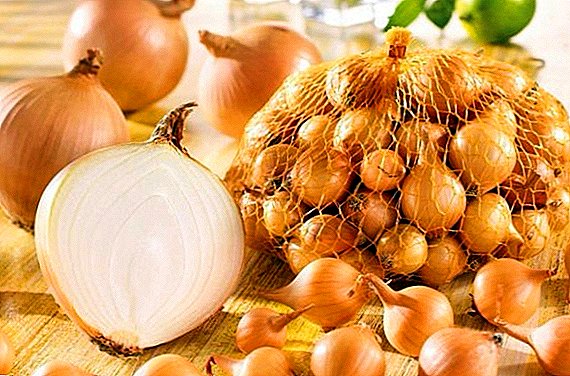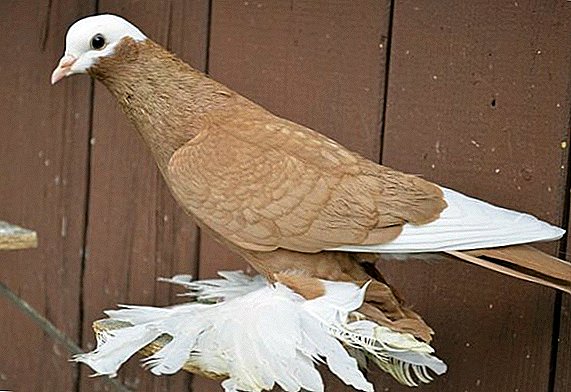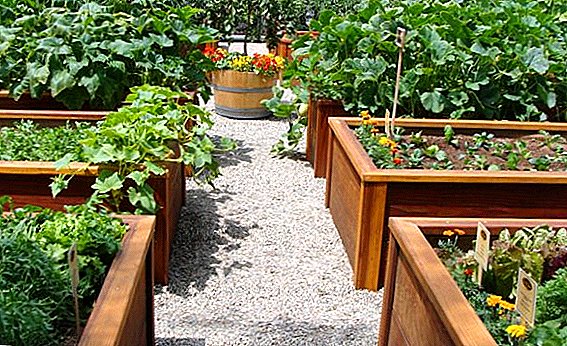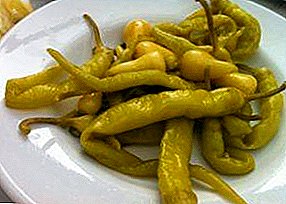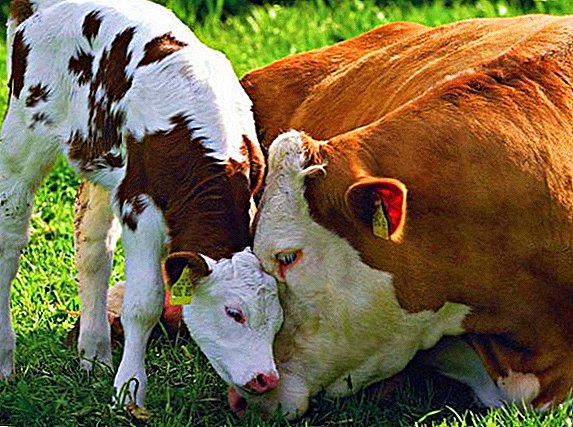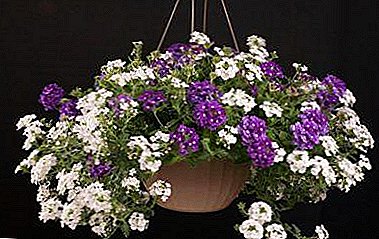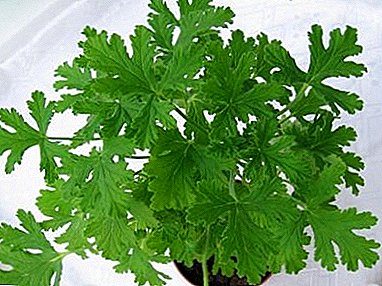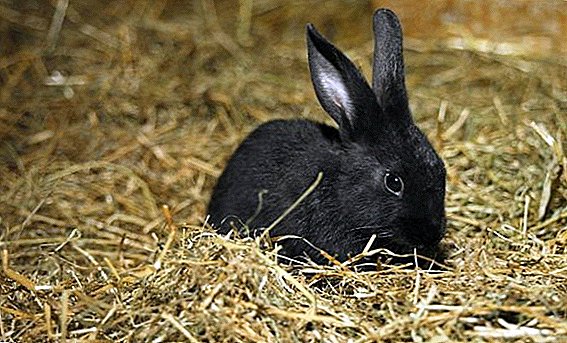 Qualitative straw refers to traditional materials that are used in the maintenance of both decorative and industrial breeds of rabbits. It is widely used as an environmentally friendly litter, regardless of the conditions of animals. However, besides this, straw often serves as a nutritious supplement in the diet of fluffy living creatures. In this article we will take a detailed look at the basic principles of using straw as feed, and also define the main contraindications and harm of this product for the body of rabbits.
Qualitative straw refers to traditional materials that are used in the maintenance of both decorative and industrial breeds of rabbits. It is widely used as an environmentally friendly litter, regardless of the conditions of animals. However, besides this, straw often serves as a nutritious supplement in the diet of fluffy living creatures. In this article we will take a detailed look at the basic principles of using straw as feed, and also define the main contraindications and harm of this product for the body of rabbits.
Can the rabbit straw
Despite many controversial opinions among rabbit breeders around the world about the benefits of straw, this product is used quite widely in feeding fluffy animals, especially with a lack of high-quality hay or other roughage. Its main value for the body of rabbits is a high content of fiber.  All herbivorous species are especially in need of this substance, since with a lack of fiber in their body, severe disorders of the gastrointestinal tract can occur, as well as other degenerative states of adjacent organs and systems. In addition, daily consumption of straw has a slight stimulating effect on the digestive tract.
All herbivorous species are especially in need of this substance, since with a lack of fiber in their body, severe disorders of the gastrointestinal tract can occur, as well as other degenerative states of adjacent organs and systems. In addition, daily consumption of straw has a slight stimulating effect on the digestive tract.
This speeds up the movement of food in the intestine, which not only improves the digestibility of other food by the body, but also stabilizes the activity of the intestine as a whole. As a result, there is an improvement in the general condition of the body, an increase in immunity, as well as an improvement in the quality of the end product of the rabbit breeding. This is especially important in the cultivation of meat breeds, since the lack of fiber in the diet of rabbits becomes the main cause of metabolic disorders, and with it the quality of meat.
Did you know? Rabbits were cultivated by humans about 6 thousand years ago on the territory of the Iberian Peninsula.
But despite its use for animals, straw should be used exclusively as an additional feeding. Due to the fact that it is harvested at the end of the growing season, the straw is characterized by a low content of proteins, carbohydrates, fats and other substances. Therefore, the complete replacement of hay for straw can cause depletion of the diet, as well as lead to poor health of animals and their immunity. In the final result, this will adversely affect the quality and quantity of the final livestock products. 
What is the best to use
Straw is a by-product of many cultivated plants, both legumes and cereals. However, not every variety of it is of particular usefulness for the organism of animals. That is why the most common in modern animal husbandry, including rabbit breeding, is that only 3 crops of straw are used: wheat, barley, millet. Only in this case, straw dressing will really be the solution when creating a high-quality and balanced diet for rabbits.
Did you know? Rabbits are one of the few mammals that can breed in any period of the year, regardless of weather conditions.
Wheat
Wheat straw is one of the most common in the world. Only derivatives of winter wheat are considered the most beneficial for animals. This is explained by the fact that spring crops have a shorter growing season than winter crops, which directly affects the amount of accumulated substances in the grain and plant residues. However, wheat straw has a low nutritional value, relative to related products.  Its main advantages are a huge fiber content and an increased concentration of vitamin D. As a result, periodic consumption of the product not only helps to improve digestion, but also helps to improve the condition of the skeletal system, as well as increase the digestibility of mineral substances from other feeds. In the end result, it contributes to the activation of metabolism and improvement of animal resistance to various adverse factors.
Its main advantages are a huge fiber content and an increased concentration of vitamin D. As a result, periodic consumption of the product not only helps to improve digestion, but also helps to improve the condition of the skeletal system, as well as increase the digestibility of mineral substances from other feeds. In the end result, it contributes to the activation of metabolism and improvement of animal resistance to various adverse factors.
Barley
Barley straw refers to the by-product of barley cultivation. It is preferable for the diet of rabbits than wheat. It also contains a huge amount of fiber, and in addition - a lot of biologically extractive substances. In addition, this straw contains a higher concentration of crude protein, which has a positive effect on animal weight gain.
Find out if rabbits can be fed with silage, grass, hay, and pelleted feed.
Do not forget that the barley straw contains a fairly high concentration of iron and manganese, which have a positive effect on the activity of the circulatory system. 
Millet
Millet straw is most beneficial for rabbits. It contains the maximum amount of dry matter, which causes a positive effect on the activation of digestion. Like barley straw, the stem of millet is characterized by a rather high concentration of biologically extractive substances, which almost completely eliminates animal feed rejection. This product is also characterized by a high concentration of potassium.
Important! Plants intended for fodder procurement are not strongly recommended to be treated with chemical fertilizers and aggressive protective agents, otherwise derivatives of chemical preparations can cause toxic poisoning in animals.
This element is extremely important for the organism, because without it, the excitability of organs and tissues, carbohydrate metabolism, and the synthesis of various enzymes are disturbed. And this directly affects not only the growth rate, but also the usefulness of the development of industrial species. Also, this product contains a lot of iron, manganese and carotene, which together have a positive effect on the immune system and the reproductive system, as well as contribute to the normal physical development of the body. 
How to give straw
Pure straw is not recommended for animals. Despite the high content of various nutrients, this product is considered extremely poor in protein, vitamins and other elements. It is best to use it as an ingredient in all sorts of nutritional mixtures in the preparation of complex feed. The main benefit of the product is observed when replacing from 25 to 50% of the total volume of the roughage used in the diet.
Traditionally coarse plant residues are used to enrich hay, but straw dressing can also be prepared on the basis of succulent and concentrated feed. In this case, straw is fed into the feeding in the calculation of 1: 5. Most farms use raw unprepared straw, but it is preferable if such a product is pre-processed into a small chop about 0.5-1 cm, then it can be more evenly distributed between the main components of the feed.
Important! In food for rabbits, only plant stems, peeled from rhizome, spikelets and soil residues, are suitable.
To increase the digestibility of such feeding, it is recommended to steam in boiling water for 30 minutes. This will help turn the straw into a lighter weight for digestion. In addition, in this case, it will be possible to extract the maximum benefit from all food, as well as to prevent the irritating effect of roughage on the gastrointestinal tract of rabbits. 
Contraindications and harm
In the standards described above, straw is an absolutely safe product for the organism of animals that does not cause any side effects. However, in order that such food does not cause serious digestive disorders, you need to know about the main contraindications to its use. First of all, roughage with high fiber content is not recommended:
- animals aged less than 6 months;
- in disorders of the gastrointestinal tract;
- during serious infectious diseases;
- with an excess in the diet of hay.

What else can feed the rabbits
In addition to the main roughage, quite often in the diet of agricultural breeds of rabbits use such feedings:
- Fresh needles - is a source of vitamins and minerals, especially important in the winter. This dressing provides an opportunity to improve the appetite of animals and hair, increase energy growth. The needles are used as thoroughly chopped chops mixed with coarse or succulent feed, in the amount of 150-200 g per day / individual.
- Young twigs - are a source of vitamins, minerals, and fiber. Use this dressing with a lack of hay and straw in the winter or early spring, and only in its pure form. Often for these purposes they use birch, aspen, acacia, willow, cherry, elm, hornbeam, pear, oak, willow, maple, hazelnut, linden, raspberry, alder, ashberry, lilac, plum, talnik, poplar, apple and ash. The amount of such feed may be unlimited, but it is best if its volume does not exceed 50% of the total mass of roughage.
Important! Rabbits are strongly advised not to feed rags of apricot, wild rosemary, euonymus, elder, wolf bark, buckthorn, and bird cherry. They contain dangerous toxic substances that can cause serious poisoning in furry animals.
- Chaff - This product is derived from cereals and is formed in the process of threshing grain. Unlike other roughage, chaff has a high nutritional value, as well as a high content of vitamins and important trace elements. It is often used in a mixture with mixed feed. To do this, half a bucket of chaff is thoroughly mixed with 1 kg of feed, after which the mixture is poured with boiling water (6 l) and infused for 1.5 hours. The product is given to animals no more than 1 time per day, replacing one of the techniques of roughage.
- Bran - This is the shell of the grain of various cereals, which is also obtained by threshing. Use them as one of the ingredients of all kinds of mash. To do this, bran steamed in boiling water for 30-60 minutes. The amount of bran in the daily ration of rabbits should not exceed 20% of the total mass of roughage.
 Straw is an important and necessary product that should be found in the diet of each rabbit. Such feed allows to intensify digestion, metabolism, and with this increase not only the digestibility of other feeds, but also the quality of animal products. However, this dressing should be used carefully and with caution, otherwise it may cause disruption of the gastrointestinal tract of animals, as well as cause serious damage to the farm.
Straw is an important and necessary product that should be found in the diet of each rabbit. Such feed allows to intensify digestion, metabolism, and with this increase not only the digestibility of other feeds, but also the quality of animal products. However, this dressing should be used carefully and with caution, otherwise it may cause disruption of the gastrointestinal tract of animals, as well as cause serious damage to the farm.

